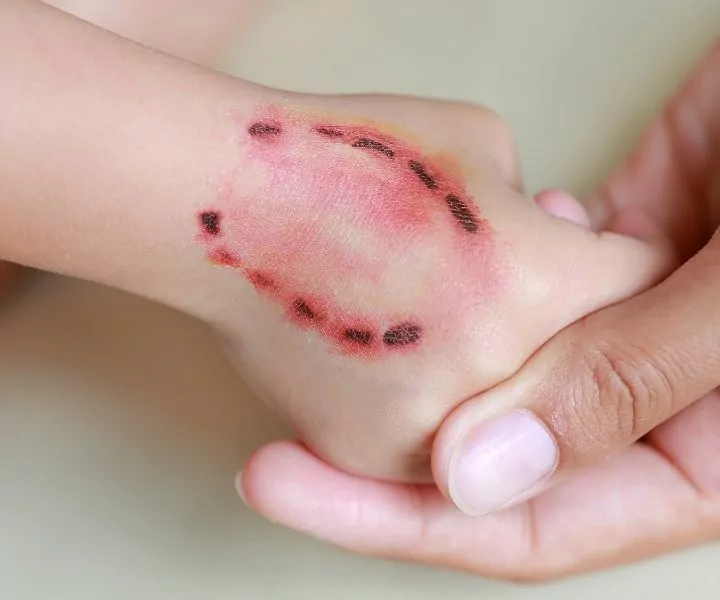What is Rabies?
As a pet owner there are some early symptoms of rabies in dogs you need to know about. Rabies is a viral disease of all mammals which is transmitted via the saliva (biting) of rabies diseased animals.
Once in the organism of the bitten animal, the virus infects the CNS (Central nervous system) consequently causing nervous symptoms and dysfunctions, and death.
Many wild animals are carriers, reservoirs of Rabies and are most likely to transmit the virus to humans, domestic animals, and pets. Such wild animals include bats, coyotes, skunks, raccoons, and foxes.
While the general transmission is through bite wounds, there have been few cases where an aerosol transmission has been noticed in closed areas with a high density of infected animals inside, for example, bat caves.
The virus is sensitive and doesn’t survive for long periods of time outside the body of the host animal, as well as in the carcass of a diseased animal.

Every case of biting by a diseased animal doesn’t end up with an infection of the healthy animal. Scientists think that approximately 15-20% of humans that were exposed to Rabies, will end up being infected. Pets are also mildly susceptible to the virus.
Symptoms
There are several stages in the development of symptoms of Rabies infection. The virus moves really slowly and the incubation period can be from 3 weeks up to 6-8 weeks.
There have been cases where an incubation period of 12 months in people has been noted and up to six months in dogs. During this period the virus will reach the CNS and then move to the animal’s salivary glands. The animal can show symptoms of one phase, two phases, or three phases of the disease.
The first phase of Rabies infection is known as the Prodromal phase. Usually, the initial phase in dogs lasts for about two to three days in dogs and between one to two days in cats. During this period the animal shows signs of nervous behavior, solitude, anxiety, and fever.

Commonly aggressive animals can turn to affectionate ones and calm ones can be easily irritated or become shy.
The Furious Rabies phase steps in afterward. This phase can last up to a week and cats are more prone than dogs in developing this particular phase. During this period a hypersensitive response to both visual and auditory stimuli in the animal is noted, and they become irritable and restless.
As the disease develops the signs progress and eventually the sick animal becomes more or less disoriented. It is not uncommon for affected animals during this phase to have seizures and die as a result of that.
The third, the Paralytic phase can follow either the Prodromal or the Furious phase. The time when this phase starts is usually 2-4 days after the initial signs of the disease. Symptoms include increased salivation, dropped jaw and deep labored breathing accompanied with choking sounds.
All of this is due to head and neck nerve damage and muscle paralysis. The animals die as a result of respiratory failure.
Diagnosis
The routinely used method for diagnosing rabies in animals is by microscopic examination of the brain tissue. Some new serological and skin methods are being mentioned but they undergo a study process and are not yet widely accepted, yet promise a potentially easy and fast way to diagnose Rabies.
Vaccination and prophylaxis
The best ways to protect yourself and your pet are by following strict vaccination protocols regarding Rabies vaccination, which is mandatory in most countries and states in the world.

Even though owners are obligated to immunize their pets, still many companion animals fail to get even a single shot of the Rabies vaccine. The situation is a bit better with dogs than it is with cats, yet cats more frequently contract the disease.
The standard vaccination protocol for most parts of the world is to vaccinate the animal at four months of age and then give a booster shot at one year of age (USA), or a year after the first vaccine shot (Europe).
Afterwards, depending on country or state, re-vaccinations are recommended yearly, every two years or every three years.
Even if your pet has been properly immunized, always report cases when it has been bitten or scratched by a wild animal or has scratches on its body of unknown origin. In order to avoid such misfortunes, keep your animal safe from stray and wild animals.
The Proper vaccination schedule is mandatory for animals that cross borders. Most countries require an animal to be vaccinated against rabies upon arrival. The period between the last vaccination and the arrival time should be no more than one year and not less than three weeks.
People and rabies
In a situation when an animal bites a human, the animal will be then observed for ten days or quarantined. The quarantine requirements will mostly depend on the fact if the animal has been vaccinated or not.

In cases when humans have been exposed to the virus, they are given hyperimmune serum containing antibodies that protect them from being infected. Prior to that, it is important for the bitten person to thoroughly wash the wound with soap and water for a couple of minutes and find immediate medical attention.
The post-exposure prophylaxis also includes a regimen of four rabies vaccine doses over the period of two weeks, being given the first, 3rd, 7th, and 14th day.
September 28th is World Rabies Day and in that manner, we prepared a fact sheet for the serious impact Rabies has on the public health all over the globe.
- The viral disease occurs in more than 150 countries annually.
- The main source of rabies in humans are dogs and dog bite-wounds (99% of reported cases).
- Rabies is 99.99% fatal once the symptoms arise.
- The disease is reported on every continent, except for Antarctica.
- Approximately 60.000 dies of Rabies each year, 99% of them are in Asia and Africa.
- Almost half of reported death due to Rabies are in children under 15 years of age.
- Urban rabies is a constant problem in most third-world countries.
